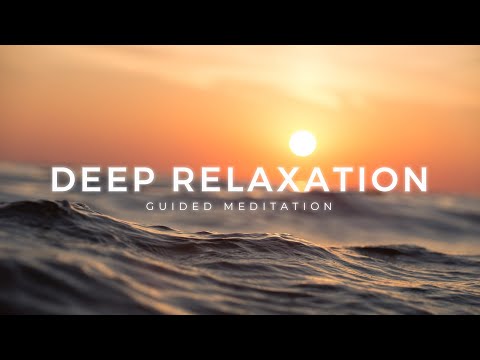As the saying goes, ‘a calm sea does not make a skilled sailor,’ but mastering the art of relaxation breathing can help you navigate the tumultuous waters of your creative process. You’ve likely experienced moments when stress clouds your mind, making it hard to think clearly. Relaxation breathing is your anchor.
It’s a simple yet powerful tool that can center your thoughts and open the floodgates to your creativity. By learning to control your breath, you’re not just calming your body; you’re setting the stage for your imagination to roam freely.
Incorporating these techniques into your daily routine can help you maintain a laser-sharp focus, allowing you to produce your best creative work. So take a deep breath, and let’s dive into the transformative practice of relaxation breathing for creative focus.
Key Takeaways
- Relaxation breathing techniques such as diaphragmatic breathing and the 4-7-8 method can enhance focus and creativity.
- Progressive muscle relaxation helps to release tension in the body and clear the mind, promoting calmness and focus.
- Tension release techniques like pursed lip breathing and progressive muscle relaxation can reduce stress and anxiety, creating a conducive environment for creative thought.
- Relaxation breathing increases oxygen flow to the brain, enhances mindfulness, and promotes overall health and wellness, all of which contribute to improved creativity and problem-solving abilities.
The Science of Breath
Your breath, a fundamental life force, directly influences your mental clarity and creative potential through its physiological mechanisms. When you’re stressed, you tend to breathe shallowly, using just the top third of your lungs. This limits the full capacity of your cardiopulmonary system, which is crucial for transporting nutrients and clearing out toxins.
By adopting deep breathing techniques, like diaphragmatic breathing, you can lower your heart rate and blood pressure, creating a sense of calm. Breathing exercises such as the 4-7-8 method further help to relax your muscles and clear your mind.
Embrace these practices to cultivate a serene mind-body connection, paving the way for enhanced focus and a wellspring of creativity. Remember, each breath is a step towards a more centered and creative you.
Diaphragmatic Breathing Basics
Building upon the Science of Breath, let’s dive into the basics of diaphragmatic breathing. This is a straightforward process that significantly enhances your focus and creativity.
Start by lying down comfortably with your knees bent. Place one hand on your upper chest and the other just below your rib cage. This will help you become more aware of your diaphragm.
As you inhale deeply through your nose, feel your stomach press into your lower hand. The hand on your chest should remain as still as possible.
Then, gently exhale through pursed lips while consciously engaging your abdominal muscles. Try to breath for a count that maintains a relaxed rhythm, ensuring a steady inhalation and exhalation cycle.
With each breath, imagine tension leaving your body, paving the way for heightened clarity and a rejuvenated creative spirit.
Mindfulness Breath Techniques
Harnessing tranquility through mindfulness breath techniques can elevate your creative prowess and focus.
Deep breathing not only fosters positive emotions but also unlocks a wellspring of creativity. Imagine the deep silence as the nurturing ground for your ideas to flourish. Pay attention to each breath as it flows in and out, and you’ll notice stress beginning to dissolve, making room for clearer, more creative thinking.
Alternate nostril breathing is a powerful breathing technique that can help you focus by harmonizing your logical and creative hemispheres.
Meanwhile, the 4-7-8 method—inhaling deeply for four counts, holding for seven, and exhaling for eight—can be a rhythmic mantra that calms your mind and primes it for innovative thought.
Let these breaths be the gentle guide back to a centered, creative self.
Rhythmic Breathing for Creativity
Incorporating rhythmic breathing into your routine can significantly enhance your creative focus and unlock a reservoir of innovative potential. Research shows that a Breathing Exercise Can Help you reach that quiet space where creativity flourishes. When you engage in rhythmic breathing for creativity, you’re not just filling your lungs; you’re cultivating a mental environment where ideas can bloom.
To get started, consider these steps:
- Find a quiet spot and sit comfortably.
- Close your eyes and begin to focus on your breath.
- Practice alternate nostril breathing to balance your mind.
- Integrate this practice into your daily yoga routine for holistic benefits.
Visualizing With Breath
You can enhance your creative process by visualizing with each breath. Imagine your ideas flowing with the rhythm of your inhalations and exhalations.
As you inhale slowly through your right nostril, picture clarity entering your mind. This visualization helps make room for innovative thoughts.
Hold this breath and visualize with breath retention for a count of four. In this stillness, allow your imagination to expand.
Exhale through the alternate nostril, releasing any mental blocks or stress.
This simple act of visualizing with breath can synchronize the logical and creative sides of your brain. It fosters a holistic approach to your work.
Keep practicing, and you’ll find yourself accessing a wellspring of creativity that you never knew you had.
Breathing Spaces in Daily Routine
To seamlessly integrate this practice into your day, carve out three specific times for focused breathing exercises that will serve as creative intermissions between tasks. Breathing helps center your mind, enabling you to tackle your daily activities with renewed energy and creativity.
Here’s how to make Simple Breathing a habit:
- Morning Calm: Start every day by inhaling slowly through your nose. Nostril breathing stimulates a sense of calm and sets a positive tone.
- Midday Reset: Around midday, pause for another session to refresh your focus.
- Evening Wind-Down: End your day with a breathing exercise to reflect and unwind.
- Bonus Moments: Whenever you feel overwhelmed, take a few deep breaths to recenter.
Incorporating these practices times a day will nurture your creativity and enhance your well-being.
Progressive Muscle Relaxation
As you explore the realm of relaxation techniques, consider the power of Progressive Muscle Relaxation (PMR) to ease the tension that builds up in your body.
By following a step-by-step process, you’ll learn to tense and then relax each muscle group, which can be a transformative tool for your creativity.
Embracing this practice regularly not only soothes your physical form but also clears your mind, paving the way for heightened creative focus.
Tension Release Technique
While pursed lip breathing helps clear your mind, progressive muscle relaxation targets body tension, letting you unlock deeper levels of calm and focus. This technique can help reduce stress by teaching your body to recognize and release tension.
Here’s how to get started:
- Find a comfortable position and take a few deep breaths to prepare.
- Tense a group of muscles as you breathe in, and relax them as you breathe out.
- Work through your body systematically, from your toes to your head.
- Notice the contrast between tension and relaxation.
This type of breathing, akin to yoga breathing, soothes your nervous system and mitigates the stress response. Embrace this practice to create a sanctuary of tranquility, nurturing your creativity and focus.
Step-by-Step Process
You’ll begin the progressive muscle relaxation by lying on your back, knees bent, to slowly ease your body’s tension and sharpen your creative focus.
Settle into diaphragmatic or ‘yoga breathing’ – place one hand on your upper chest and the other below your rib cage. As you inhale deeply through your nose, feel your stomach press into your hand, not your chest. Exhale with pursed lips breathing, as if blowing through a straw, and gently tighten your abdominal muscles.
If stress and anxiety bubble up, close your left nostril with your right thumb and take fast breaths through the right. This technique can help calm your mind.
Dedicate at least 20 minutes to this practice, gradually letting go of tension, and nurturing a holistic sense of well-being.
Benefits for Creativity
Progressive muscle relaxation enhances your creative output by systematically reducing physical tension and mental clutter. By incorporating techniques like yoga breathing, you can help improve your ability to concentrate on creative tasks.
Here’s how:
- Increases Oxygen Flow: Deep, deliberate breathing replaces shallow breathing, saturating your brain with oxygen, which can spark creativity.
- Reduces Stress: Tension release through methods like pursed lips breathing can make you feel less anxious, fostering a conducive environment for creative thought.
- Enhances Mindfulness: As you focus on relaxing each muscle group, you become more present, clearing the way for innovative ideas.
- Promotes Health and Wellness: A relaxed body supports a healthy mind, paving the path for creative insights and enhanced problem-solving abilities.
Embrace these practices to unlock your full creative potential.
Measuring Your Breath Focus Success
Evaluate your success in enhancing focus and creativity through relaxation breathing by observing changes in your mental clarity and emotional equilibrium. Start by measuring your breath; notice if your breaths per minute have reduced, indicating a calmer state. Use yoga breathing techniques like pursed lips breathing to help slow down your breath and increase focus success.
Commit to just a few minutes a day to practice, and track your progress by how quickly you can let go of negative emotions and how steadily your thoughts flow. As you continue, you’ll likely find improvements in your problem-solving skills, concentration, and overall enthusiasm.
Conclusion
Embrace the ebb and flow of your breath like gentle waves upon the shore, guiding you back to a sea of creativity.
You’ve learned to harness the whispering wind within, transforming each inhale into calm, each exhale into clarity.
As you weave breath into your daily tapestry, notice the vibrant colors of focus unfurling.
Celebrate each rhythmic rise and fall; they’re the silent symphony of your creative spirit.
Breathe deep, create freely, and flourish.




